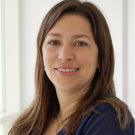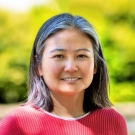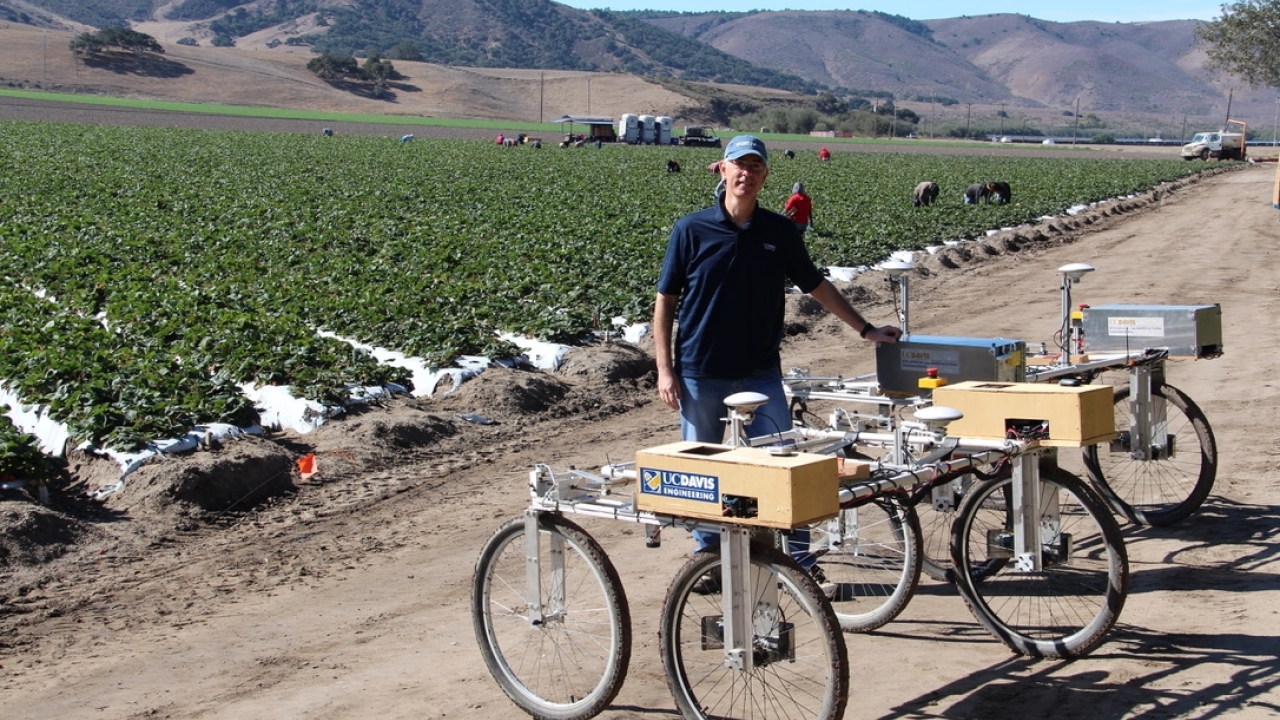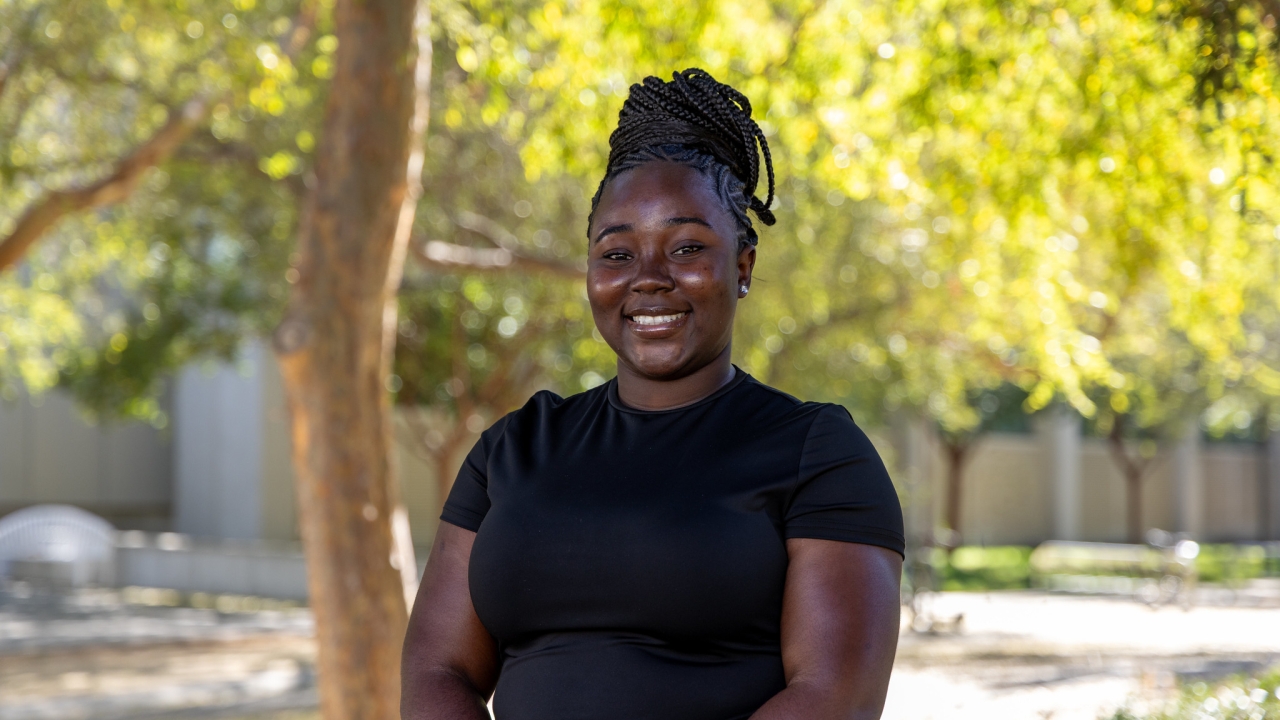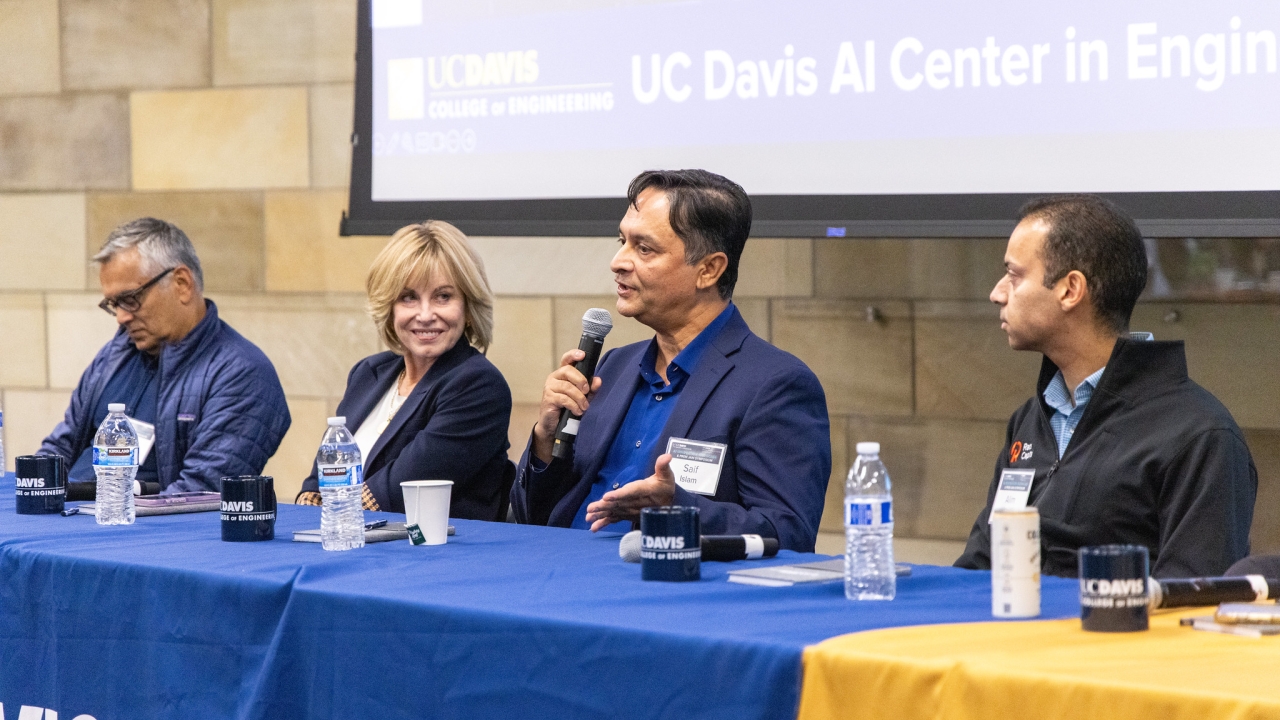Hannah Darr is Guided by a Passion for Renewable Energy
When Hannah Darr visited the University of California, Davis, she immediately felt at home. The city's relaxed pace of life and the friendly academic environment of the campus reminded her of the agricultural town in Southern California she grew up in.
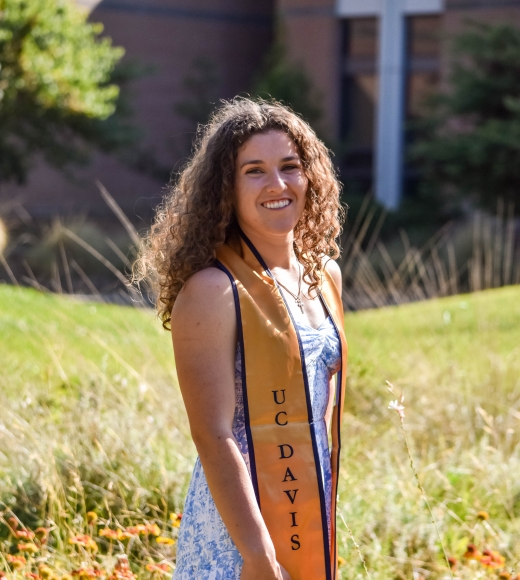
Now, as a recent alum of the UC Davis Department of Materials Science and Engineering, Darr can attest to the friendly academic environment. She speaks of the immense support she received during her undergraduate years — earning her Bachelor of Science degree and a department citation for her exemplary achievements and service — and how feeling like she always had someone in her corner cheering her on helped her achieve her educational goals and feel confident taking the next steps in her journey.
What inspired you to study engineering?
I have always been interested in pursuing a career that would help mitigate the effects of climate change, which initially led me to apply to UC Davis as an environmental science and management major. However, even before my first Zoom lecture, I realized that I wanted to take a more proactive approach to my passion for the environment by contributing to the development of sustainable renewable energy. I came across the materials science and engineering department website one day, and I was instantly intrigued by the idea of using materials science to enhance current renewable energy technologies. I quickly started the process of changing majors.
What engineering course has particularly supported your growth and development as an Aggie Engineer?
My favorite class at UC Davis has to be "Sustainable Energy Technologies: Batteries, Fuel Cells, & Photovoltaic Cells" with Professor of Materials Science and Engineering Marina Leite. I previously took "Principles of Device Physics," which focuses heavily on the fundamental principles of semiconductor operations, including p-n junctions, a combination of two semiconductor materials — a p-type and an n-type — in a single crystal. "Sustainable Energy Technologies" built on my theoretical knowledge by demonstrating how p-n junction technology is applied in solar cell technology.
In this class, we experimented with how varying different parameters like layer thickness and doping concentrations — or how the number of dopant atoms added to the material to modify its electrical properties — in the solar cell affect its efficiency. This hands-on experience significantly increased my interest in solar cell technologies and has been one of several experiences that have inspired me to pursue a career in the solar energy industry.
This year, I had the opportunity to join Professor Leite's research group, whose main focus is on perovskite solar cells and photonics. I have gained valuable insight into machine learning and how we can utilize it as a tool in materials discovery in the rapidly growing field of perovskite materials.
What other experiences have impacted your engineering pursuits?
I had the opportunity this year to be a learning assistant for "Properties of Materials." I was able to support Yayoi Takamura, professor and chair of materials science and engineering, in her study hall hours to give aid and support to the students through guidance on the practice problems. It was a rewarding experience to help the students understand fundamental concepts in materials science and also be able to discuss why these concepts were important outside of the scope of the class.
During the summer after my third year at UC Davis, I worked as a performance engineering intern at Maxeon Solar Technologies' outdoor testing facility in Davis. This internship really challenged and honed my skills in experimental design by requiring me to design a standard testing protocol to evaluate the impact of shading on different solar modules. I was also able to practice my oral communication skills by presenting my findings at a company poster session, which allowed me to explain and defend my experimental design and results.
This summer, I look forward to being a solar cell intern with GAF Energy in San Jose, where I will be helping their research and development team conduct failure analysis testing on their rooftop shingle solar cell technology.
Now that you have graduated with your Bachelor of Science, what is next for you?
I am excited to continue this journey through my research into perovskite solar cells with Professor Leite as I begin my master's program at UC Davis next year. My goal is to help make renewable energy more efficient and accessible, so after I am done with my education, I hope to join a research and development team in the solar cell industry to help bring new solar cell technologies to the public.
Is there anything else you would like to share about your experience at UC Davis?
I have found the faculty within the Department of Materials Science and Engineering to be truly inspiring. Professor Leite, Professor Susan Gentry and Professor Takamura have provided immense support, guidance and opportunities as I have navigated my way through this program. These professors all go above and beyond both inside and outside of the classroom to support the students in the department. They have been very supportive of me and have encouraged me to go for opportunities that I would have otherwise struggled to have the confidence to pursue.

